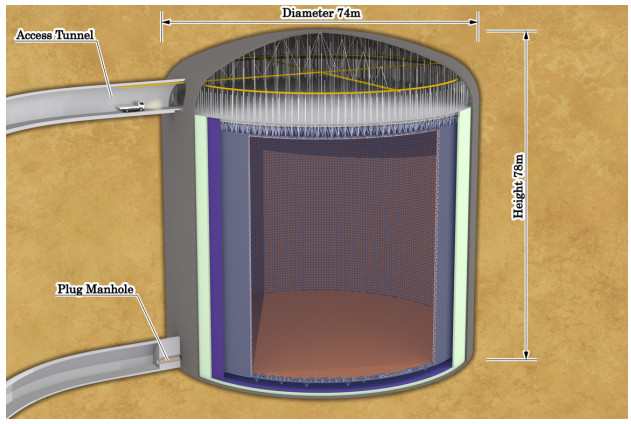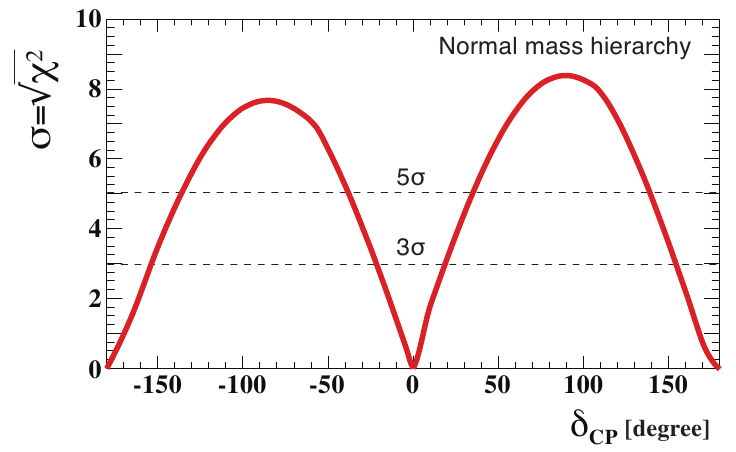Hyper-Kamiokande
Academics: Dr Steve Boyd, Dr Ben Richards
Postdoctoral Fellows : Dr David Hadley
Students: Mr Nicholas Latham, Ms Katharina Lachner
Hyper-K is a successor project to Super-K with the capability of making definitive measurements of the main outstanding questions in oscillation physics: CP-violation, mass hierarchy and the θ 23 octant. The detector will also have a world leading sensitivity to nucleon decay and the observation of cosmic origin neutrinos. The experiment will operate in the same beamline as T2K with the same off-axis configuration. The Hyper-K detector baseline design (pictured below) will be a third generation water Cherenkov detector in Kamioka with a 1.0 (0.56) Mt total (fiducial) mass - making it 20 (25) times larger than Super-K. Hyper-K construction will begin in 2022 and first data is expected in 2025-2026.

Based on an exposure of 7.5 MW x 107 sec, and assuming the mass hierarchy is known and sin2 2θ13=0.1, the expected CP-violation coverage is illustrated in the plot below: a 3σ (5 σ) measurement can be made for 76% (58%) of all CP-phase values.

Hyper-K Physics
Neutrino Flavour Oscillations and CP violation
Hyper-K's goals are to determine the mass hierarchy (which of the three known mass states is the heaviest?), to measure CP violation in the lepton sector; a measurement which may hold a possible explanation for the matter-antimatter asymmetry of our universe—and to make high-precision measurements of the oscillation parameters that T2K and previous the generation of neutrino flavour oscillation experiments have pioneered.
Solar Neutrino Physics
The sun is a prolific generator of neutrinos. Super-K and previous solar neutrino experiments have already shown the existence of effects of earth matter on the oscillation of neutrinos as they travel through the earth. Hyper-K will measure these effects ever more precisely. This will lead us to a better understanding of the earth's interior and the solar atmosphere.
Supernova Physics
Computer simulations of core collapse supernovae is a complicated process and is known not to reproduce the characteristics of supernovae that have been observed on Earth. The number, flavour, energy and arrival time of neutrinos from a core-collapse Galactic supernova are probes of the physics of the supernova explosion process. Observation of these neutrinos in Hyper-K, and other neutrino detectors around the planet will afford us a unique probe of the supernova environment. However, Galactic supernovae do not happen regularly - the last was in 1987. Hyper-K would observe more than 60,000 supernova neutrinos in a time window 10 seconds wide should one explore within a radius of 30,000 light years.
Nucleon Decay
It is well-known that the Standard Model of Particle Physics is only part of a new, larger, and yet still undeveloped theory. Grand Unified Theories tend to predict that protons can decay in lighter yet currently unobserved particles. Hyper-K will provide the largest source of possible decaying protons, and is expected to be able to increase the current minimum proton decay time by an order of magnitude.
Links
Click here for Postgraduate opportunities with the Warwick EPP Group
